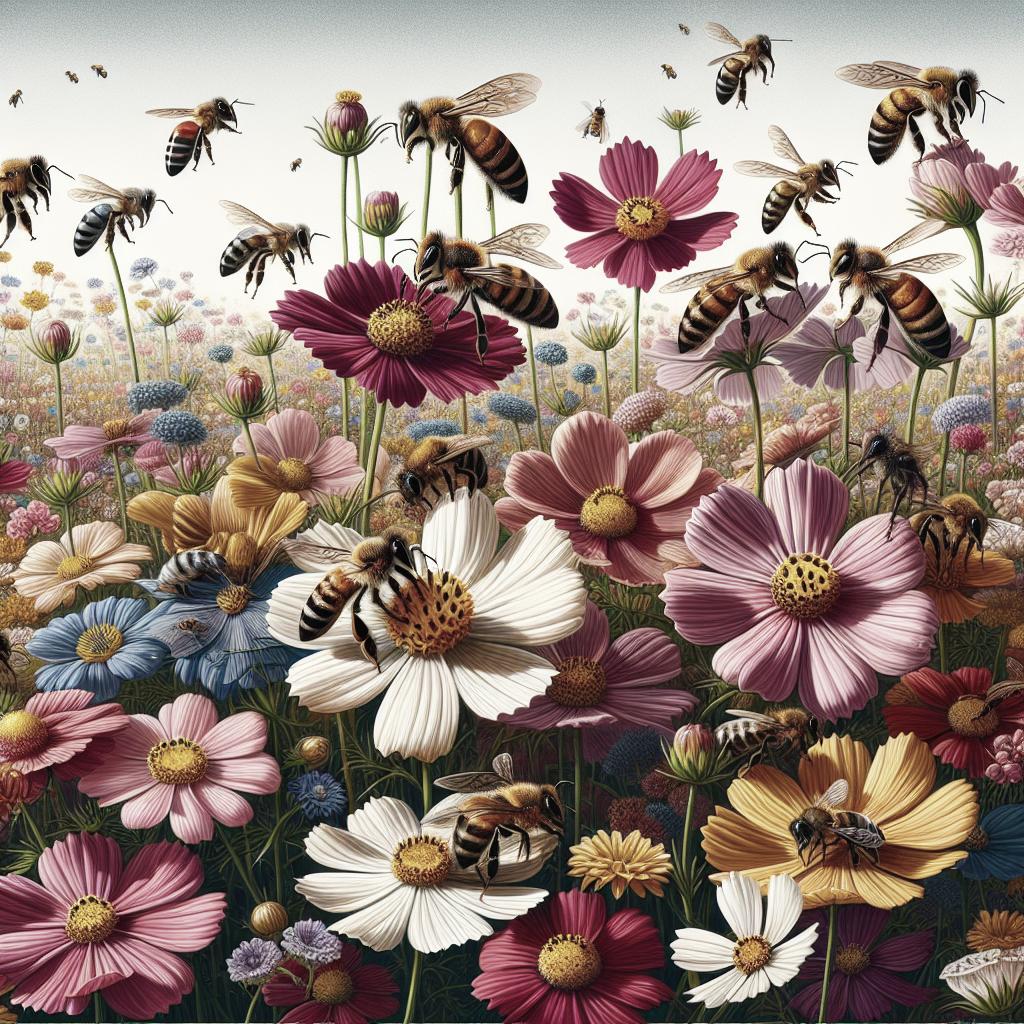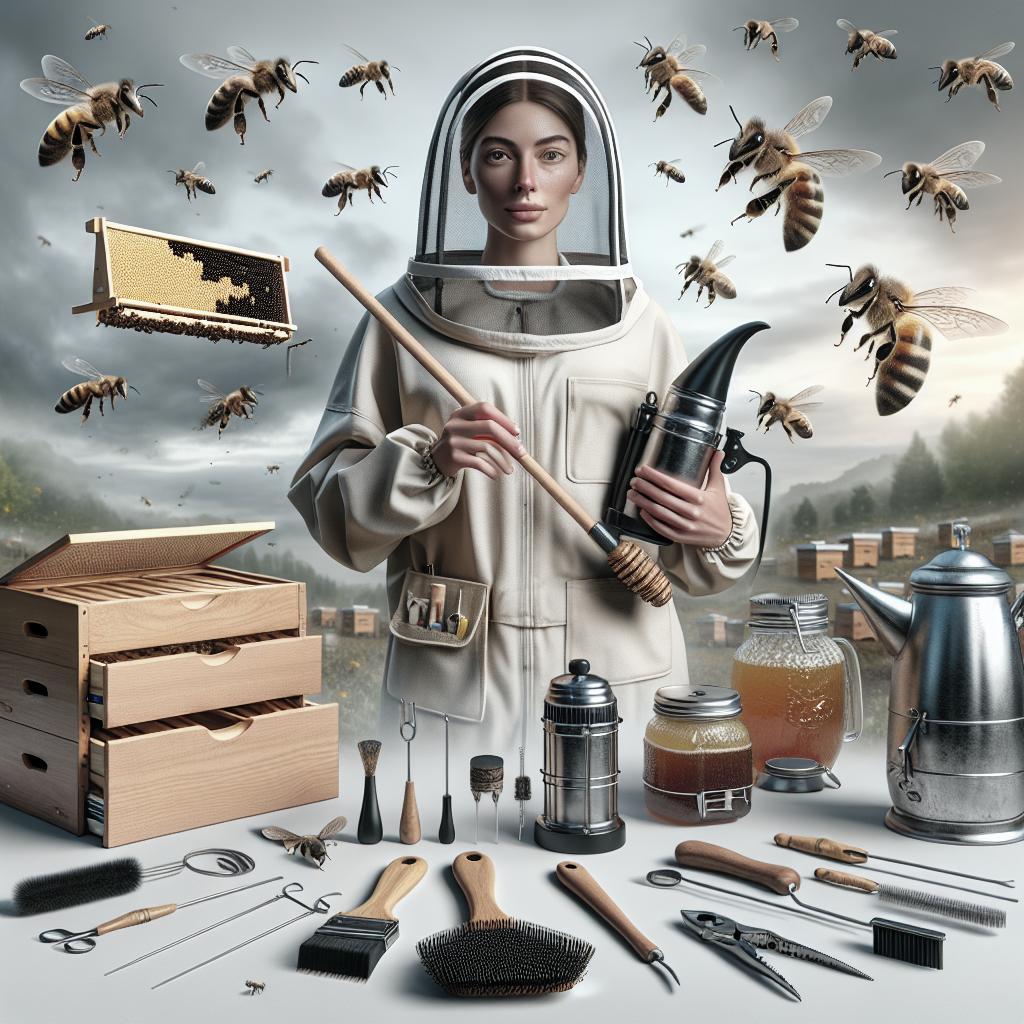Best Plants for Bee Foraging
Creating a garden that supports bee populations is vital for biodiversity. In this article, we’ll explore the role of pollen and nectar in bee life and consider the importance of native pollinators. We’ll also introduce you to the top seven flowering plants beneficial to bees, ranging from bee balm to wrinkleleaf goldenrod. Additionally, we’ll guide you on where to purchase these plants and discuss the necessity of growing native species. Lastly, if you seek more information, you’ll find a selection of further resources. Following these guidelines will turn your garden into a bee sanctuary, contributing to environmental health and sustainability.
What do bees use pollen and nectar for?
Bees are essential pollinators that rely on pollen and nectar for their survival. Nectar, a sugary liquid, provides them with the energy needed for their daily activities. It fuels their flights and the collection of resources necessary for maintaining the hive. During nectar foraging, bees inadvertently pollinate flowers, facilitating plant reproduction and biodiversity.
Pollen, on the other hand, is a source of protein and other nutrients crucial for bee growth and development. Worker bees carry pollen back to the hive in specialized structures called pollen baskets, and it is used for food production within the colony. Both pollen and nectar are indispensable to the health of bees, making them critical resources that need to be provided consistently.
Wait, but what about native pollinators?
While honeybees are among the most recognized pollinators, native pollinators also play an invaluable role in ecosystems. These include a variety of species such as bumblebees, solitary bees, butterflies, and even some birds. Native pollinators are often more efficient at pollinating native plants compared to their non-native counterparts.
Supporting native pollinators means planting a diverse array of indigenous flowers, providing the right habitat, and ensuring non-toxic environments. Embracing the presence of native pollinators can enhance crop yields and contribute to the ecological balance. Often overlooked, these native species are integral to maintaining varied and resilient ecosystems.
The 7 best flowers to plant for bees
1. Bee balm (Monarda spp.)
Bee balm, with its vibrant blooms, is a favorite among bees. Its aromatic flowers attract not only honeybees but also hummingbirds and butterflies. Blooming from mid-summer to fall, bee balm provides a long-lasting source of nectar.
Adaptable to various soil conditions, these hardy perennials thrive in full sun to partial shade. The tubular flowers are perfect for bees to access nectar, making it a reliable addition to any bee-friendly garden.
2. White wild indigo (Baptisia alba)
White wild indigo stands out with its tall spikes of white blossoms. This plant is a robust choice that offers both aesthetic appeal and environmental benefits. It blooms in late spring, providing critical resources just as bees emerge with the warming weather.
Requiring minimal maintenance, white wild indigo is drought-tolerant and thrives in sunny environments. Its extensive root system also helps improve soil quality, making it an excellent choice for sustainable gardening.
3. Purple coneflower (Echinacea purpurea)
A popular choice for pollinator gardens, the purple coneflower attracts a range of bees and butterflies. This resilient perennial blooms throughout the summer, offering weeks of feeding opportunities for foraging bees.
The large, daisy-like flowers are not only beautiful but also functional, providing easy access for bees to gather nectar and pollen. Purple coneflowers thrive in full sun and adapt well to various soil types, contributing to its widespread popularity.
4. Black-eyed Susan (Rudbeckia hirta)
Known for their striking yellow blooms, black-eyed Susans are prolific in attracting bees. These hardy flowers bloom from early summer to fall, creating a consistent supply of nectar for pollinators.
Black-eyed Susans are easy to grow and can adapt to both sunny and partially shaded areas. Their low maintenance requirements make them ideal for gardeners seeking to support bee populations with little effort.
5. Joe-pye weed (Eutrochium purpureum)
Joe-pye weed is a tall, wildflower native to North America, known for its clusters of dusty pink flowers. Its height and rich nectar content make it attractive to a wide variety of pollinators, including bees.
This plant prefers wet soils and grows well in full sun to partial shade. A late summer bloomer, Joe-pye weed is particularly beneficial when other flowers have completed their flowering cycles, sustaining bees through to fall.
6. Marsh blazing star (Liatris spicata)
With its spiky purple flowers, marsh blazing star is a magnet for bees. This plant is known for producing copious nectar, beneficial to bees and butterflies alike.
Tolerant of wet conditions, it thrives in full sun and prefers moist, well-drained soil. Its vertical appeal makes it an excellent choice for adding height and drama to flower beds while supporting pollinators effectively.
7. Wrinkleleaf goldenrod (Solidago rugosa)
Goldenrod, often mistakenly blamed for hay fever, is actually an essential nectar source for bees. Wrinkleleaf goldenrod blooms in the late summer and fall, a critical period when other nectar sources are scarce.
Goldenrods are easy to grow, requiring full sun and a moderate amount of water. They contribute significantly to extending the foraging season for bees, marking them as cornerstone plants in pollinator gardens.
Where can I buy these plants?
Local nurseries and garden centers are great places to purchase bee-friendly plants, as they often carry a wide range of native species. Ask staff for recommendations that suit your climate and soil type for best results.
Online plant retailers offer an extensive selection, allowing you to purchase specialty varieties or hard-to-find native plants. Be sure to verify the source is credible and that the plants are shipped responsibly to ensure healthy arrivals.
Do I have to grow native plants?
While growing native plants is highly recommended due to their adaptation to the local environment, it is not strictly necessary. Non-native species can also provide essential resources for bees if chosen carefully.
The key is to avoid invasive species and focus on growing plants that can coexist well with natives. Whether native or non-native, the plants chosen should contribute to the ecological health and diversity of the area.
Further resources
Several organizations provide resources and information on supporting bees and native pollinators. The Xerces Society and the Pollinator Partnership are excellent places to start.
For gardeners, the National Wildlife Federation and local extension services offer practical guides and planting recommendations suitable for specific regions and climates.
Lessons learned
| Topic | Key Points |
|---|---|
| Benefits of Pollen and Nectar | Nectar provides energy, and pollen offers proteins essential for growth. |
| Native Pollinators | Diverse species play integral roles in ecosystems, often more efficient with native plants. |
| Top Flowers for Bees | Include bee balm, white wild indigo, purple coneflower, black-eyed Susan, Joe-pye weed, marsh blazing star, and wrinkleleaf goldenrod. |
| Buying Plants | Available at local nurseries, garden centers, and online retailers. |
| Growing Native Plants | Recommended for adaptation benefits, though non-natives can also support bees effectively. |


